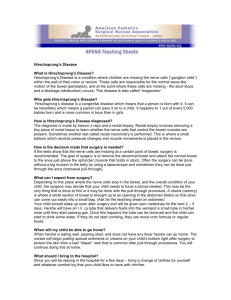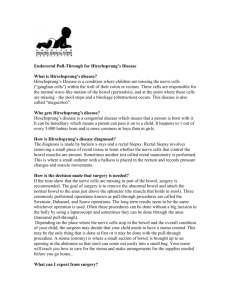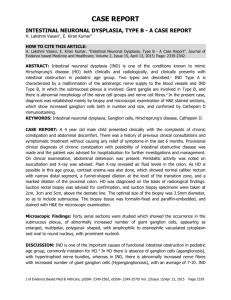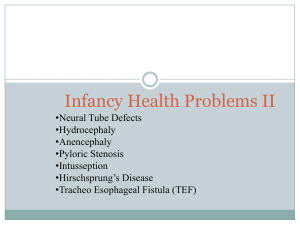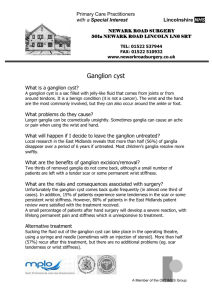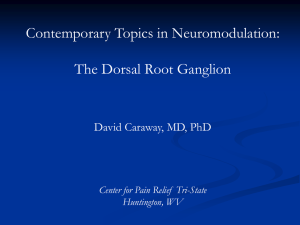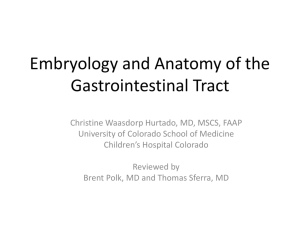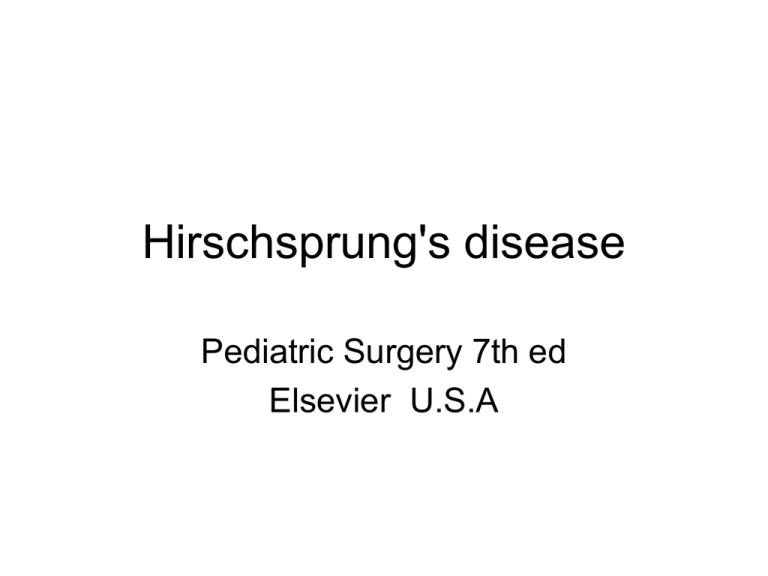
Hirschsprung's disease
Pediatric Surgery 7th ed
Elsevier U.S.A
Hirschsprung's disease
* Harald Hirschsprung was a pathologist at
Queen Louise Children’s Hospital in
Copenhagen
* He described two cases of children who
died of intestinal obstruction called
“congenital megacolon ”
Etiology and Genetics
• Ganglion cells are derived from the neural
crests
• In infants with Hirschsprung disease the
process of ganglion cell migration is
disturbed, so the ganglion cells are absent
in the distal bowel.
CLINICAL PRESENTATION
•
•
•
•
Neonatal Intestinal Obstruction
Chronic Constipation
Enterocolitis
others
RADIOLOGIC EVALUATION
The pathognomonic finding of Hirschsprung
disease on contrast enema is a transition
zone between the normal and aganglionic
bowel
ANORECTAL MANOMETRY
• The recto-anal inhibitory reflex (RAIR ) is
defined as reflex relaxation of the internal
anal sphincter in response to rectal
distension and is present in normal child
ren but absent in children with
Hirschsprung disease.
RECTAL BIOPSY
• The definitive finding that defines
Hirschsprung disease is absence of
ganglion cells in the submucosal and
myenteric plexuses
SURGICAL PROCEDURES
•
•
•
•
•
SWENSON PROCEDURE
DUHAMEL PROCEDURE
SOAVE PROCEDURE
LAPAROSCOPIC PULL-THROUGH
TRANSANAL (PERINEAL) PULLTHROUGH
• Colostomy
COMPLICATIONS
•
•
•
•
Enterocolitis
Soiling
Fecal incontinence
Infection
Thank You

